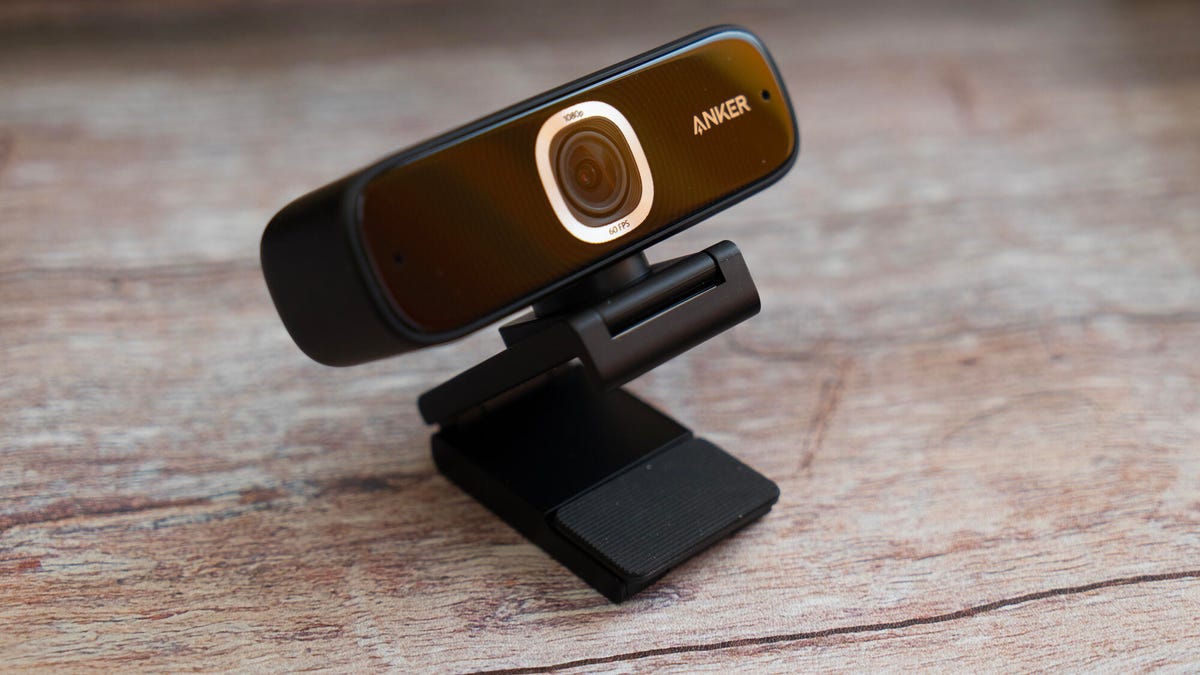 Why You Can Trust CNET
Why You Can Trust CNET Anker's PowerConf C300 webcam focuses on movers and shakers
The company's new FHD, 60fps home conferencing camera is surprisingly good.

Anker's joining the parade of companies retrofitting its product lines to accommodate the new home-conferencing economy -- Microsoft's Modern Home is among the latest -- with its AnkerWork brand. The new line incorporates the forthcoming PowerConf S500 small-room speakerphone and the just-released $130 (£119) PowerConf C300 webcam, a Full HD 60fps model with a smartly executed ability to keep you in frame and better-than-average autofocus. It can certainly keep up with similarly priced Logitech models.
I always turn off the autofocus on webcams because, like old digital cameras, they usually do the annoying back and forth pulsing before they lock. And autofocus doesn't matter much when you're just plopped in front of your desktop or laptop or when the webcam has a wide field of view. But if you're showing physical objects, occasionally standing or there's more than one person on your end, autofocus becomes more of a concern.
Not only does the C300 have relatively fast, accurate autofocus in its widest 115-degree mode -- it also has 90-degree and 78-degree options similar to the Razer Kiyo Pro -- it also offers Auto-Frame and Self-Frame modes. The first keeps you in the center of a wide frame, while the second centers you in a narrow frame, both performing the necessary internal pans and tilts to grab you from the top of the chest up when sitting or to make sure your head is in the frame when standing. The Self-Frame also lags by a second or two to try to eliminate picking up superfluous movements, like trying to eat your breakfast off-camera.
The reframing isn't perfect (with the not-yet-final software and firmware it took a few side trips before moving back to center) and you can't set it to automatically frame with a specified field of view, but if you need to move around while on camera it's really convenient.
The autoexposure does a good job of managing the lighting on your face, and it also fares well when keeping the exposure the same through changing lighting conditions. Ditto for white balance: It even manages to compensate for the effect of a big, "white" screen in front of you (which on many monitors is a bit greenish, thus cameras often correct to make you look too magenta), as long as it's not the only light source in the room. Even then it's not bad. And in low light, you still look properly exposed and white balanced. In general the image can get pretty soft or a bit crunchy if you're not fully zoomed out, because it's only 1080p. (That's the answer to the question "why do you need a 4K webcam?" by the way.)
Keep in mind, however, that all of that may not transfer into your conferencing app. And after changing the settings in the rather meh AnkerWork application, you may need to unplug and replug the camera in order for the system to release it to another application, at least in Windows. But that's not really Anker's fault. It connects via USB-C and there's a MacOS application, which makes it Mac friendly, too.
Its mount is well designed, as well. In addition to the uncommon but must-have ability to tilt forward and swivel 360 degrees, there's a little foot on the bottom that lets you collapse the mount into a wedge-shape with the camera tilted up so that you can perch it on other surfaces if you don't have a tabletop tripod. It comes with two flimsy stick-on privacy shutters, one of the few disappointments in an otherwise premium-feeling webcam.
The mics are decent, doing a good job of narrowing the field to pick up your voice, but it sounds a little too tinny, a common artifact of compression and noise suppression. If audio matters to you, though, you should definitely use a headset or standalone mic instead.
In a sea of webcams dominated by which-Logitech-should-I-buy and meh me-too models, the PowerConf C300 stands out, and I liked it quite a bit more than I thought I would.

